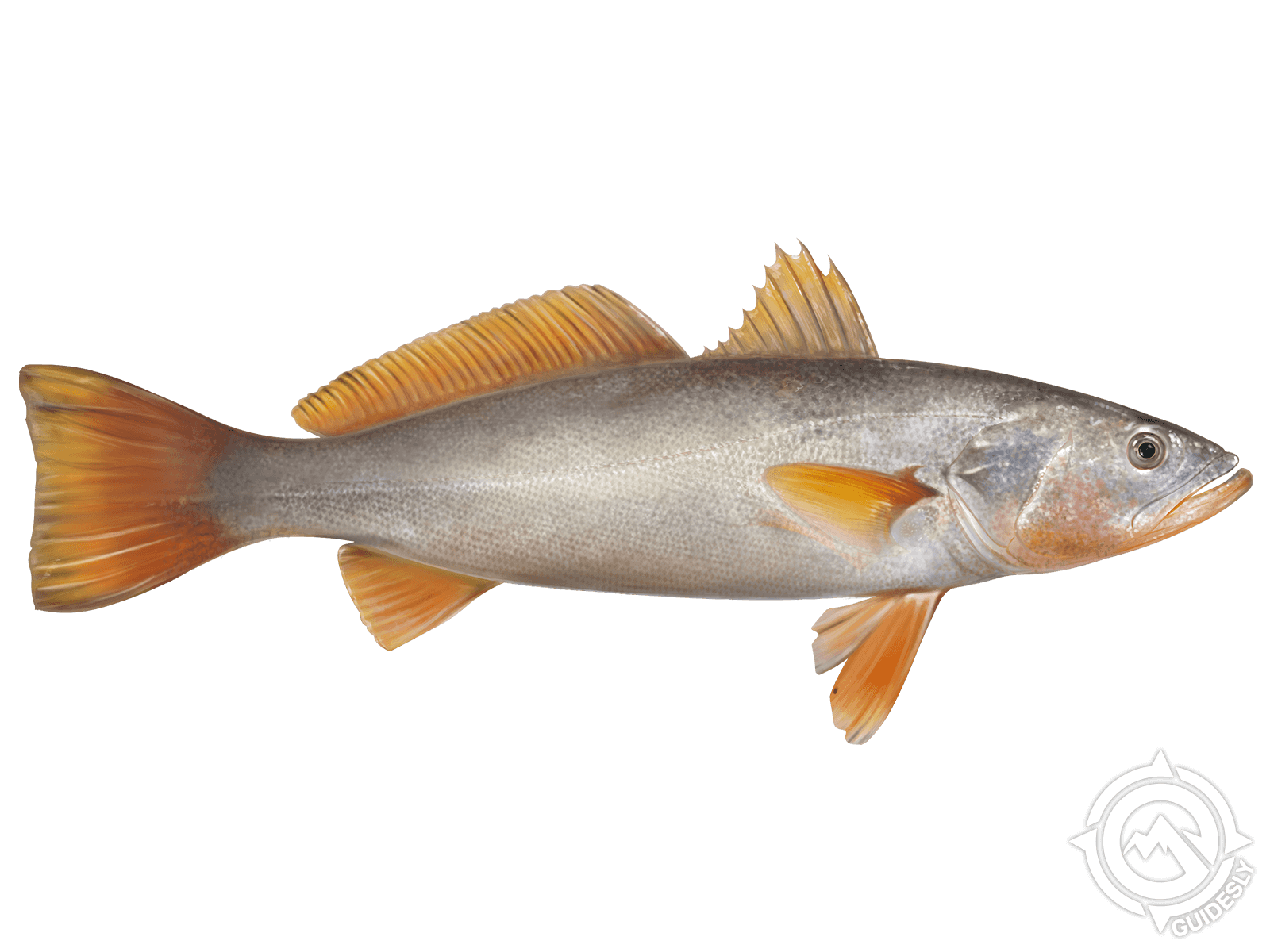Orangemouth Weakfish

Species Details
Cynoscion Xanthulus
Sciaenidae
Perciformes
Nearshore, Offshore, Estuaries, Lakes, Rivers
3 - 54 lbs.
12" - 51"
Orangemouth (Cynoscion xanthulus) Weakfish Description
The Orangemouth Weakfish is a fish that thrives in brackish waters. It has a compressed elongated body with a lateral line across its body. This fish has rough scales with pointed canines on top of its mouth. It has a silvery color with orange-yellow mouths which where it got its name from. Its fins also have an orange-yellow tinge except its pelvic pectoral which is dark gray. The orangemouth weakfish is closely related to the squeteague.
Size and Diet
The orangemouth is a medium-sized to large fish. The biggest orangemouth weakfish can grow up to 4 feet and 2 inches and weigh up to an incredible 54 lbs. On average, they’re only 1 foot long and weigh 2 to 3 lbs. The orange mouth weakfish primarily feeds on small fish and shrimp.
Interesting Facts About the Orangemouth Weakfish
- This fish is native to Mexico but was introduced to the Salton Sea California around 1950 to 1955 and other parts of the United States.
- The orangemouth weakfish is not the only species with an orangemouth, it can be sometimes confused with its relatives: Yellowtail Corvina (Cynoscion stolzmanni) which also has a yellow-tinged mouth.
- The orangemouth weakfish is still considered as one of the fish species that are data deficient.
- One of the best ways to cook an orangemouth weakfish is by stuffing it with herbs and cooking it by the grill.
- Most anglers practice catch and release when fishing for a weakfish since they’re currently quite rare.
How to Fish the Orangemouth Weakfish
The orangemouth weakfish is considered to be an underrated gamefish by some anglers. They are usually by-catches when anglers are trying to catch something else. You can either catch this fish by sight casting by the shore or you can take a kayak and look for areas where the fish might be hiding. Look for rock jetties, mussel beds, marsh banks, and even man-made structures such as bridges and pilings. Check the temperature of the water, weakfish are easier to catch when the water temperature is around 57° to 59°F. If the water is above 75°F they will most likely hunt at night. Cast your presentation up-tide, you need to make it more natural for the orangemouth, or else it will get suspicious and won't take your bait. Once the fish hits, immediately set your hook. Once it is set, lightly reel in as the weakfish has a soft mouth.
The recommended gear for this gamefish is a 7-foot medium weight rod with a 20-lb fluorocarbon leader. Use a weight of 1 and a half to a 3 quarter oz for the added weight. with a 5-inch grub. Use 2/0 hook sizes.
As much as possible use natural-looking lures. Recommended ones are jigheads, bucktails, and grubs. For baits, use bloodworms, shedder crabs, or shrimps.
Habitat and Distribution
The orangemouth weakfish is demersal. They usually hang around in the sandy bottoms of estuaries, lagoons, open bays, coastal waters, rivers, and lakes with high salinity. Their depth is up to 165 feet and The beast season to catch an orangemouth weakfish is during spring and their spawning season is on fall.
In Mexico, this fish is scattered in the Pacific Ocean, but in the U.S., they can be found in 3 states - California, Texas, and New Mexico. The most important fishing in California is the Salton Sea, but you can also spot them in San Diego and the Calaveras County. In Texas, fishing spots are the Victor Braunig Lake and the Bexar County.






